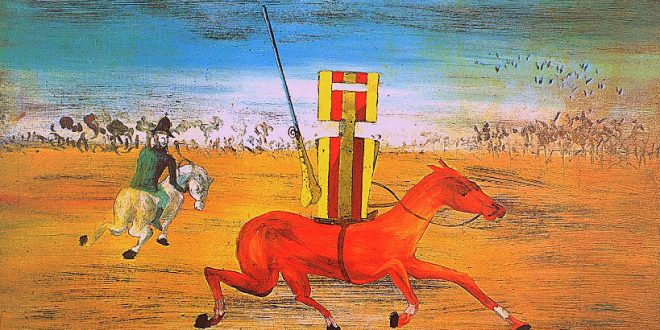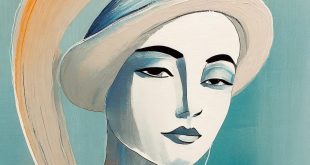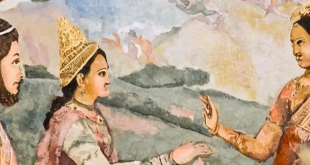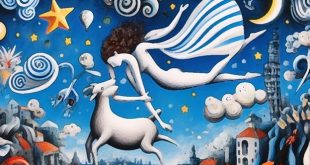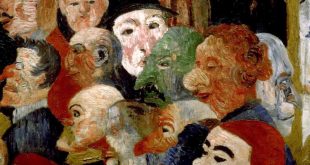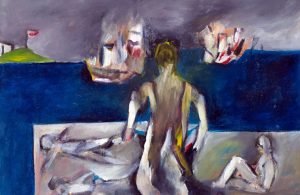 SIDNEY NOLAN 1/3 – He, eldest of four children, was born at Carlton (Melbourne). In 1853 his great grandfather had migrated from Cork to Adelaide, working as a mounted policeman in Victoria. In 1919 his parents settled at St Kilda. He attended the Brighton Technical School, before moving to Prahran Technical College, where he studied lettering and drawing). From the early 1930s he worked in several jobs and during his employment he became intrigued by the properties of commercial paints. As a boy, he had seen Ned Kelly’s armour (on exhibition in Melbourne), and heard his grandfather’s account of chasing the Kelly gang.
SIDNEY NOLAN 1/3 – He, eldest of four children, was born at Carlton (Melbourne). In 1853 his great grandfather had migrated from Cork to Adelaide, working as a mounted policeman in Victoria. In 1919 his parents settled at St Kilda. He attended the Brighton Technical School, before moving to Prahran Technical College, where he studied lettering and drawing). From the early 1930s he worked in several jobs and during his employment he became intrigued by the properties of commercial paints. As a boy, he had seen Ned Kelly’s armour (on exhibition in Melbourne), and heard his grandfather’s account of chasing the Kelly gang.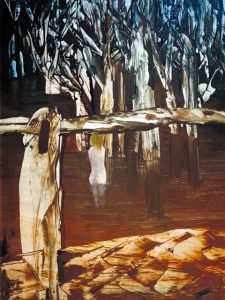
SIDNEY NOLAN 2/3 – In the Melbourne Public Library he “met” the poetry, reading Baudelaire and Rimbaud, Rilke and Verlaine. Through his reading he came to believe that myths provided an essential emotional response, believing that (as artist), he could link myth to history. His search led him to John Reed (a supporter of modernist art), and he became a regular visitor to his farmhouse at Heidelberg, where Reed encouraged talented writers and painters. He married Elizabeth Paterson, lived briefly Grove on the Bellarine Peninsula In 1940 he held his first solo exhibition. During 1946, his memories were reinforced by a visit to Kelly locations (across north-eastern Victoria).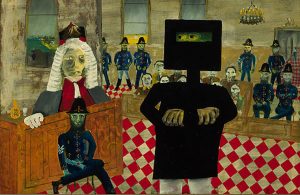
SIDNEY NOLAN 3/3 – In early 1945 he began his first depictions of the bushranger Ned Kelly. His paintings were based on a close reading of historical and current texts. His stylistically radical paintings, continued Australian traditions, by providing visual imagery to enrich the national ethos. On 1948 he married Cynthia Hansen (John Reed’s sister). Her support and contacts was crucial to his success. In 1950 he made his first trip out of Australia (an his painting was purchased by the Tate Gallery, London, in 1951). In 1955 he went to the Greek island of Hydra (where began a series of paintings on the Trojan War).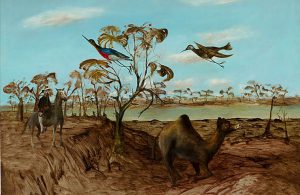
SIDNEY NOLAN 4/4 – Travelling became Nolan’s weapon against depression. Throughout his painting career, it was the exploration of materials and the challenge of placing an object in front of a background, that obsessed him. From the 1960s Nolan had gained increasing recognition. In 1981 he was elected to the Royal Academy of Arts, London. In 1978, in memory of his brother, he donated his Gallipoli drawings and paintings to the Australian War Memorial. Overseas, in 1983 he bought a large manor on the Welsh border (where he maintained his archive and created large spray paintings). He was applauded for his ability as an artist to create and manage myths. He died on an November day in London, and was buried in Highgate cemetery.
The intellectual property of the images that appear in this blog correspond to their authors. The sole purpose of this site, is to spread the knowledge of these painters and that other people enjoy their works.
To pursue this issue, you can digit:
http://meetingbenches.com/2017/02/your-wild-australia/
http://meetingbenches.com/2017/02/sidney-nolan-19171992-australian-painter-myths-give-emotional-responses/
 Meeting Benches World art in all forms
Meeting Benches World art in all forms
